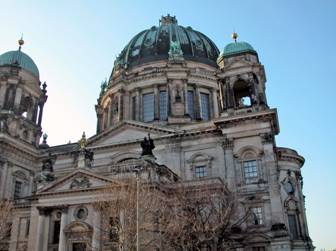
RENAISSANCE |
| __________________________________________________________________________________________________________________________________________________________________________ |
The Renaissance (from French Renaissance, meaning "rebirth"; Italian: Rinascimento, from re- "again" and nascere "be born") was a cultural movement that spanned roughly the 14th to the 17th century, beginning in Italy in the late Middle Ages and later spreading to the rest of Europe. The term is also used more loosely to refer to the historic era, but since the changes of the Renaissance were not uniform, this is a very general use of the term.
As a cultural movement, it encompassed a revival of learning based on classical sources, the development of linear perspective in painting, and gradual but widespread educational reform. |

| Traditionally, this intellectual transformation has resulted in the Renaissance being viewed as a bridge between the Middle Ages and the Modern era. Although the Renaissance saw revolutions in many intellectual pursuits, as well as social and political upheaval, it is perhaps best known for its artistic developments and the contributions of such polymaths as Leonardo da Vinci and Michelangelo, who inspired the term "Renaissance man". |
|
 |
The Berlin Cathedral is an example of Renaissance Revival (sometimes referred to as "Neo-Renaissance"), an all-encompassing designation that covers many 19th century architectural revival styles which were neither Grecian nor Gothic but which instead drew inspiration from a wide range of classicizing Italian modes.
Under the broad designation "Renaissance architecture" nineteenth-century architects and critics went beyond the architectural style which began in Florence and central Italy in the early 15th century as an expression of Humanism; they also included styles we would identify as Mannerist or Baroque. Self-applied style designations were rife in the mid- and later nineteenth century: "Neo-Renaissance" might be applied by contemporaries to structures that others called "Italianate", or when many French Baroque features are present (Second Empire). The divergent forms of Renaissance architecture in different parts of Europe, particularly in France and Italy, has added to the difficulty of defining and recognizing Neo-Renaissance architecture. |